After rising up from the valley floor in the funiculare tram, a short walk brings you to the old plaza, la Piazza Vecchia. Encircled by palaces, a bell tower and a colonnaded portico, the space is punctuated at its center by a Baroque fountain from the late 1700s. The piazza is the heart of the city.Those palaces now house restaurants, hotels, a school and a museum.
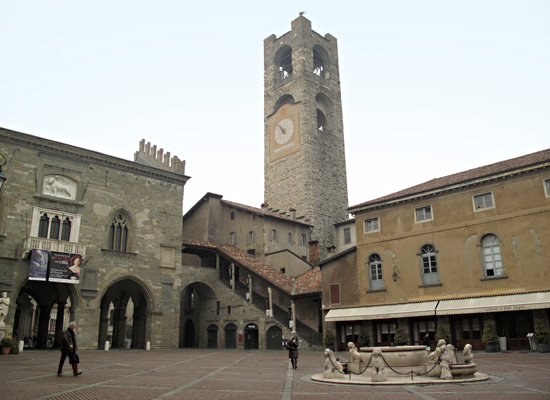
Passing through the portico (at the left in the photo above, under the banners) you find a white marble sundial that was set into the ground in 1798. It points the way north. (It seems to have been restored in 1982.)
Just beyond the other side of the portico, you step into the Piazza del Duomo, the Plaza of the Cathedral. In mediaeval times this little square was at the political, commercial and religious heart of town. Facing south into the piazza, from your left to right is the Cattedrale di Bergamo (il Duomo), the Basilica di Santa Maria Maggiore, the Cappella Colleoni and the Battistero (Bapistry).
Cattedrale di Bergamo – il Duomo
The ceiling of the Duomo featured gilt patterning and accents to its carved decorations surrounding painted scenes.
I have a real soft spot for the shrines to Mary. This Madonna della Pietá is in an elaborately carved and embellished side altar.
While in the cathedral, I heard chanting and thought perhaps they were playing a recording “for ambience”. No. I followed the singing which lead me down a staircase near the altar. I came to a very modern underground chapel and 50 Nuns at mass, surrounded by a dozen sarcophaghi.
The dominant presence in the Piazza del Duomo is the union of entrances for the Basilica di Santa Maria Maggiore (at left in the photo below) and the Cappella Colleoni (at right).
Basilica di Santa Maria Maggiore
The Basilica entry is fairly modest and overshadowed by the Chapel entry at its side. It opens, however, into a great, embellished space.
Here’s a shot of the crucifix that hangs over the central altar. (Note the skull and crossbones at the base of the cross.)
All vertical walls are covered with pictorial tapestries. (Although it was still very cold in there!)
Here is historic Bergamo’s answer to today’s compact PDA/Calendar. This is how they note the times of the masses for week days and weekends.
On the outside wall of the Basilica, just to the left of the front door, are permanently-mounted, flat bars of iron that are measuring devices from the Middle Ages. (I can’t find any information about their purpose or unit-of-measure.)
“The Weaver’s Wall” and “the Weaver’s Comb.” (?)
Cappella Colleoni
From a Wikipedia entry: “Dedicated to the saints Bartholomew, Mark and John the Baptist, it was built in 1472-1476 as the personal shrine for the famous condottiere Bartolomeo Colleoni, a member of one of the most outstanding families of the city, and his beloved daughter Medea. The site chosen was that of the sacristy of the nearby church of Santa Maria Maggiore, which was demolished by Colleoni’s soldiers.”
With its 3-D lozenge pattern, the repetition of columns, the figurative sculptures, rose windows, domes and bas-relief panels, no one and no building could compete for stature against this chapel. I think that one could study it all day, as well as the decorated fence surrounding the chapel entry. (No photos were allowed inside.)
The Baptistry
My favorite part of the Baptistry is the decorative ironwork fence around its octagonal shape/
– – –
Note: So very many images and scholarly descriptions are available online that it would feel redundant if I tried to duplicate what’s already been said. I would rather toss out my own personal impressions and show what catches MY eye and mind, and provide enough information so that a blog reader could do their own further research.

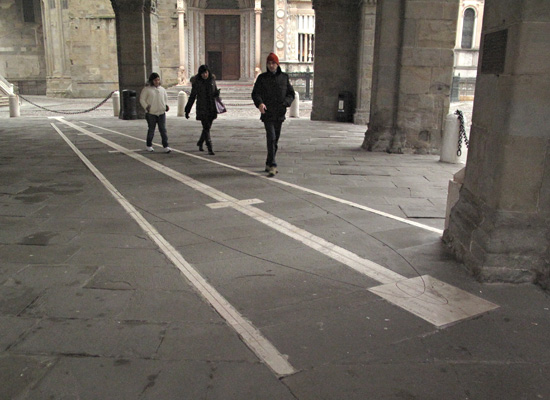
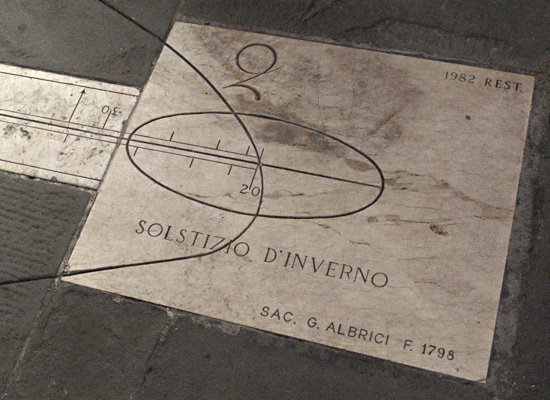
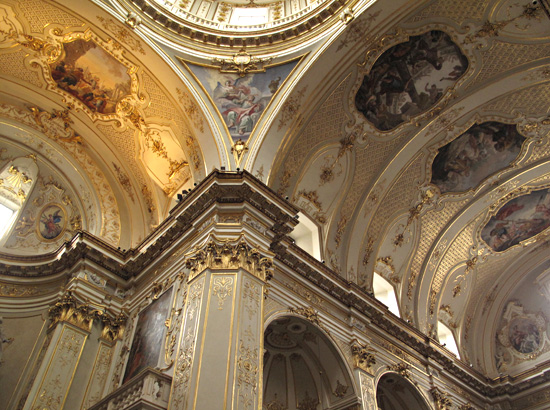
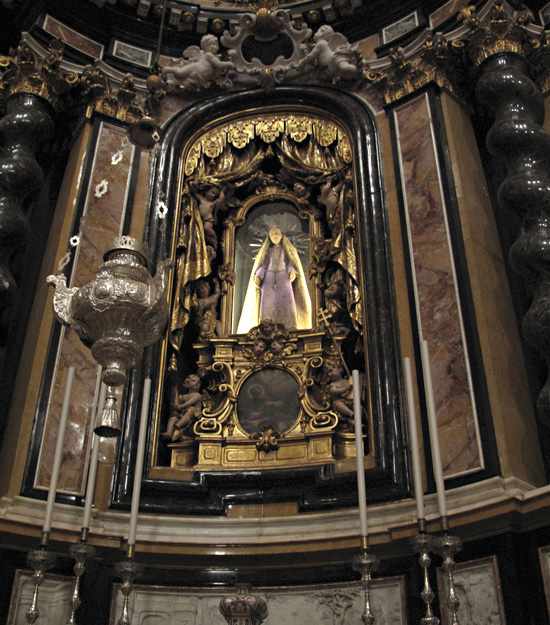
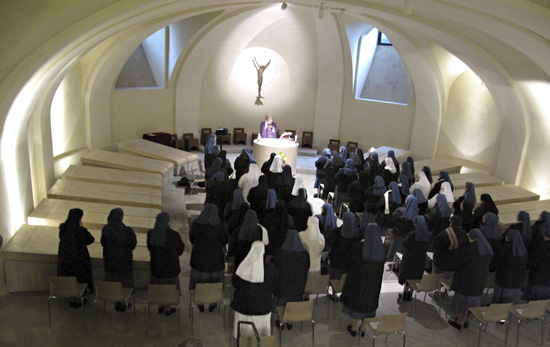
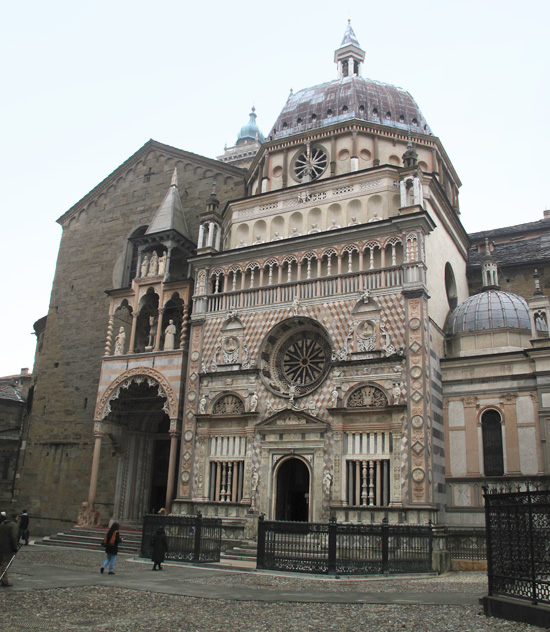
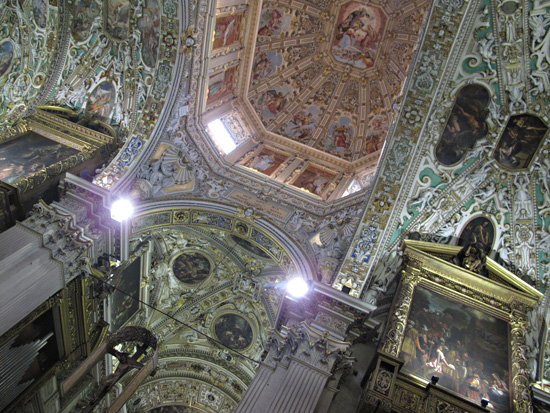
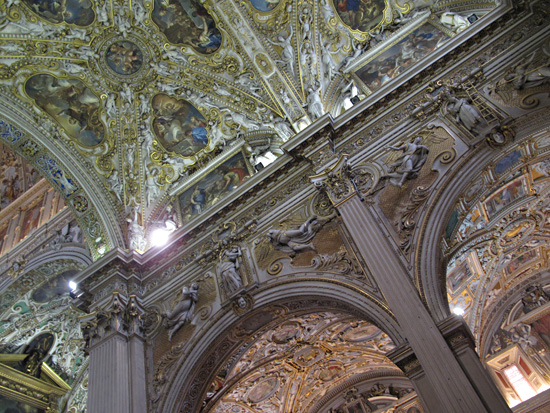
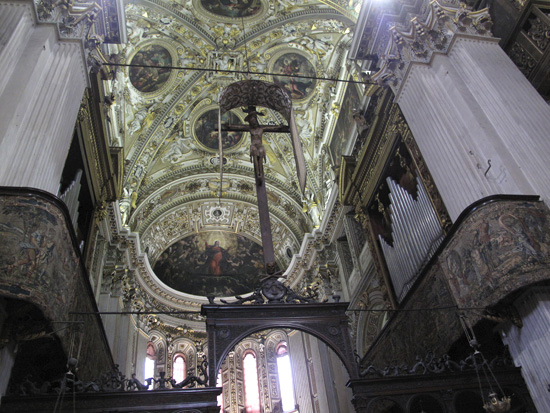
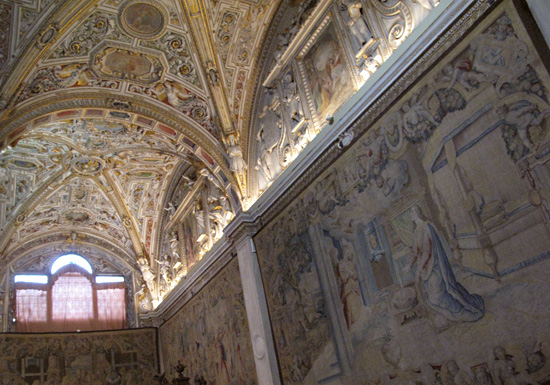
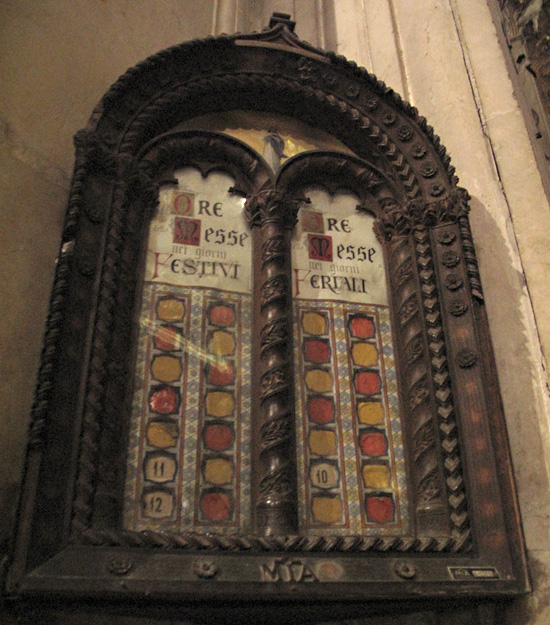
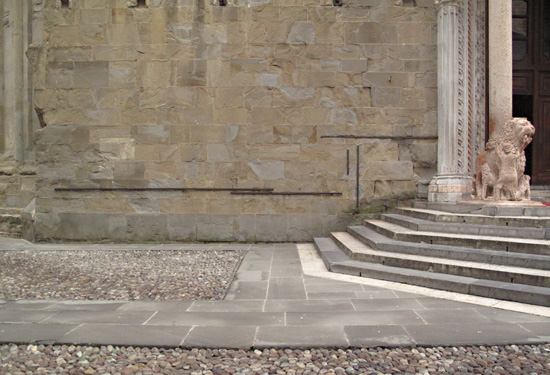


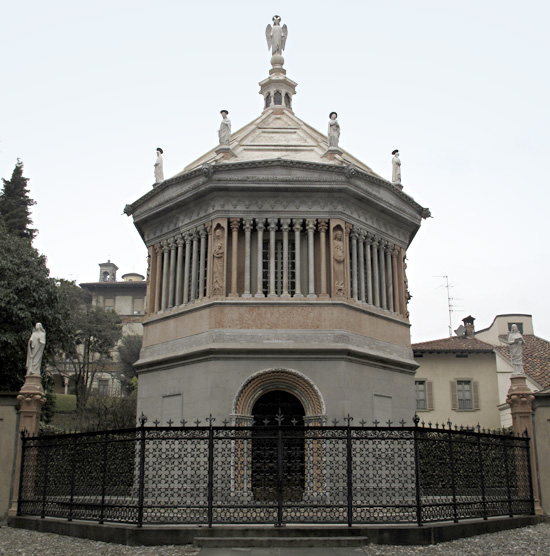
And I LOVE the ceilings. Aren’t they amazing? They hobble together so many different styles all under one roof! I also love the photo of the nuns at mass. Reminds me of mom.